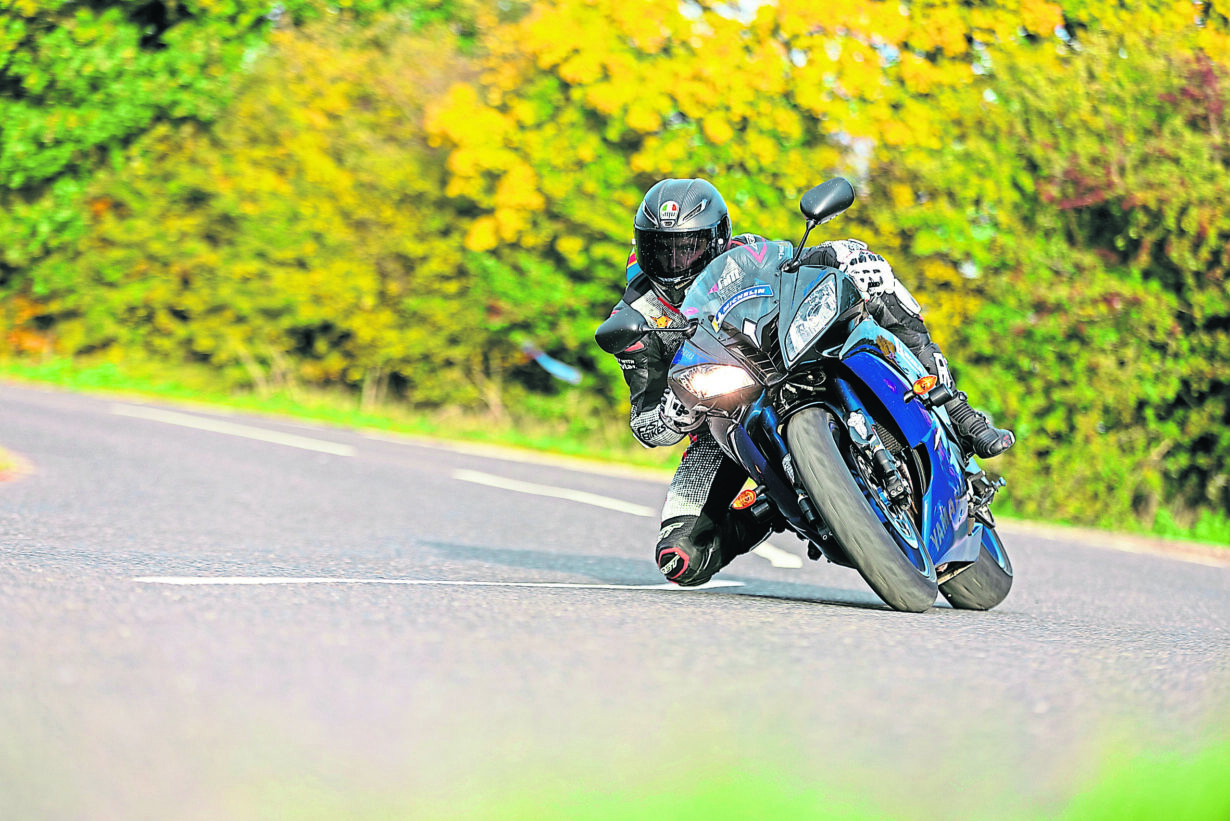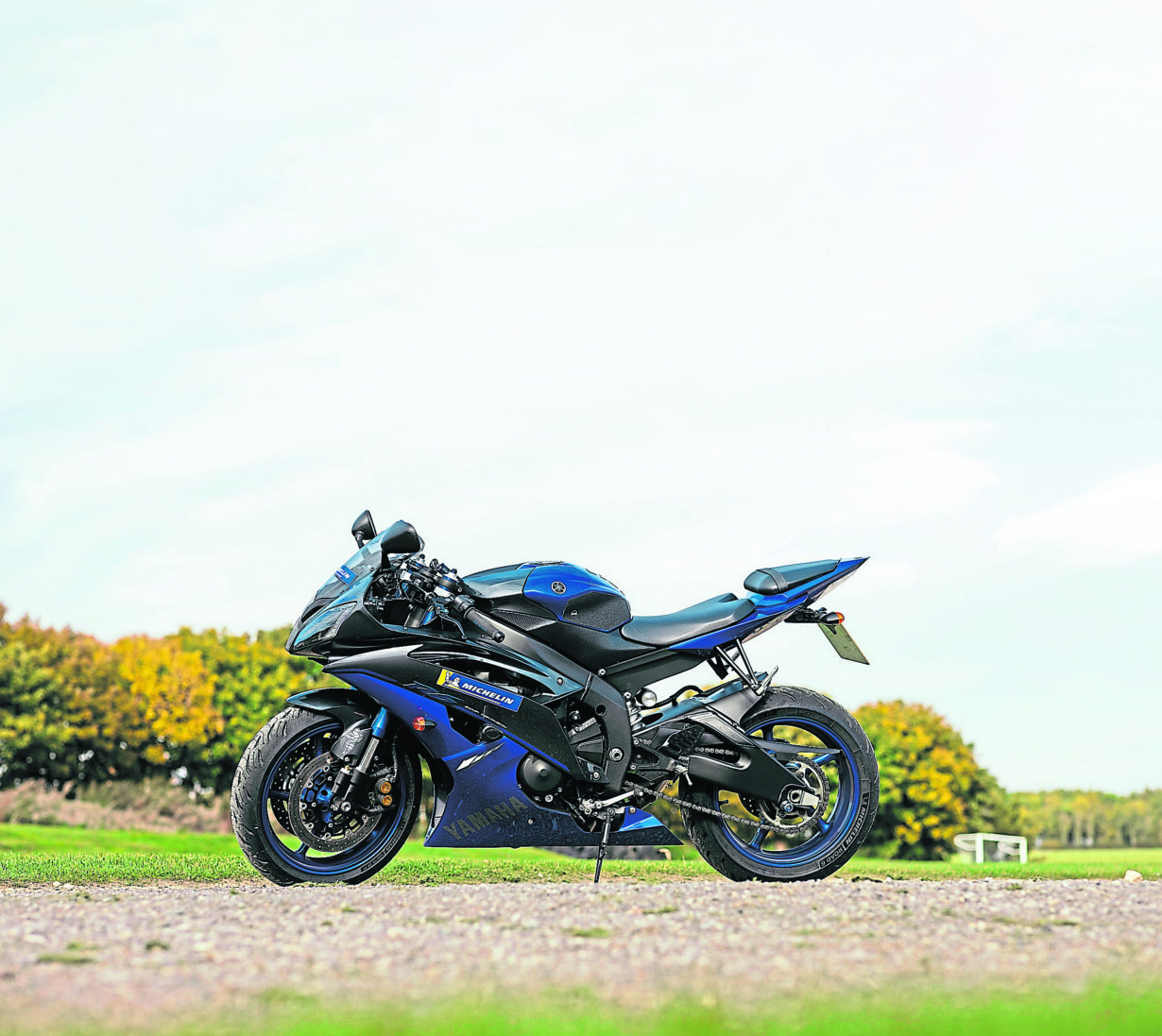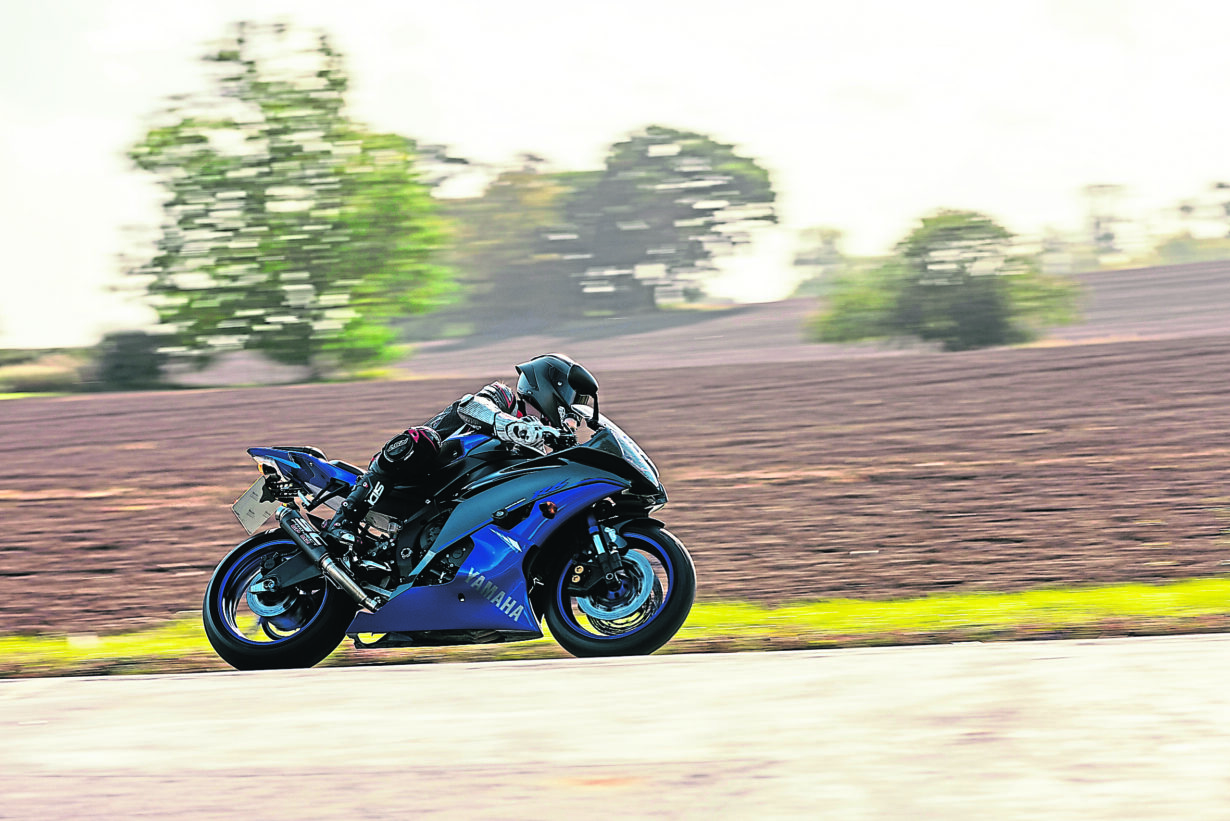If you had a pound for every Yamaha R6 ever sold… you’d have lots of pounds. I don’t know exactly how many of the machines have trundled down the Japanese brand’s production line since the model’s inauguration back in 1999, but the answer is ‘a lot’. R6s are everywhere, and rightfully so because they’ve been up at the pointy end of the supersport sector from the second they joined the party, changing with the times to stay at the top of their game. I’d go as far as guessing that the R6 is possibly the most commonly sold 600 of the 21st century (although Honda might have something to say about that). Of the many generations we’ve come to know and love over the years, the one you see before you is perhaps the most popular of them all (13S).

Technically speaking, that might be down to the fact it’s had the longest shelf life among its siblings, first appearing in showrooms in 2008 and staying there for nine years until Yamaha trundled out a Euro 4-spec option in 2017. That latter bike was based largely around what you see here, albeit with 43mm forks, a six-tier traction control system, a quickshifter, better brakes and a fairing design which Yamaha claimed made the R6 8% more aerodynamic. Not too shabby, and when you factor in the slim-fast treatment it was given to get on the right side of the weighing scales, you’d think it would be the weapon of choice to go for… but that’s not the case. It certainly moved the game on aesthetically, but from a performance point of view, in road trim, it was a lethargic flop compared to this iteration. Before you get suspicious of why I’m building up this bike’s hype so much, I should probably remind folk that the 13S version was formed on the pillars of greatness. Before it came the 2CO that hit the scene in 2006 and completely transformed the model’s appearance and competence on equal levels.
The 2CO was a revolution in its own right, being the first mass-produced motorcycle with a ride-by-wire throttle, while also boasting radial calipers and a whole load of trick tech and features. It was very good (I owned and raced one), but the model update that came in 2008 (13S) capitalised on all that it offered and made the package so much sweeter.
At a time when manufacturers’ hands weren’t completely tied by legislation, Yamaha was able to dive into the guts of the R6 and better it in a whole host of ways. The 13S saw its frame beefed up around the headstock, while careful alterations actually increased its flexibility in other areas where it’d been too stiff. In contrast to that, for added stability, there was a new swingarm added to the mix that was stiffer and more supportive. The suspension was tweaked, too, the bars were dropped 5mm lower, and there were loads of updates made to the engine to strengthen its disposition.

The main gain to the bike was the introduction of variable length intake trumpets. According to revs, they’d alter in length to optimise the engine torque or revs as was needed most. What this did, coupled with revised fuelling and a new ECU, was to make the 2008 model much punchier in the midrange, for starters, while ensuring it had the legs to run with the best of its rivals up the top end, too. For me, this was bad news, as in 2008 I was racing a GSX-600 L8 in BSB’s Stock 600 class – where the new R6 rocked up and dominated the series. They could match the Suzuki’s punch out of corners, but often made an average of 10bhp more than the GSX-R on the championship’s control dyno. Of course, it could have been worse… at least I wasn’t on a Honda.
The point in that anecdote was to hammer home the impact this machine made the moment it arrived, especially on a race track. It was a game changer on so many levels and ultimately, as the aforementioned tale told, could be and should be considered Yamaha’s finest R6. The funny thing is, having heaped praise on it to the point even I’m feeling a little sick, one of the first things I noted when straddling this R6 was how basic it seemed. It was cutting-edge at the time, but by today’s standard it didn’t even have a gear indicator on its small, dot matrix dash. Aside from the YCCT throttle, it didn’t have any tech, actually, not even ABS, which is maybe not such a bad thing, but the lack of shifter and blipper didn’t exactly warm my cockles. You could fit such items to this bike if desired, of course, but maybe the owner didn’t warrant their addition? It was a pleasantly stock example, with the only addition being an SC Project can that needed no introduction when the four-cylinder motor fired into life. Subtle it was not, but I quite liked it.
The R6 is a screamer and is one of those machines that should be heard, especially if you rev it to its towering redline. Being on best behaviour with this borrowed steed, Tim and I made sure not to do so – promise – but we didn’t hold back from indulging in its general offerings. I’ll admit, I was a little disappointed by the motor at slower speeds, which did anything but rip my arms off when opening the throttle hard. The fuelling felt a bit gash on throttle pick-up, which might be more down to the fitted can than anything else, but let’s just say it took a bit of calibrating, too. Once moving, the R6 would soon pick up the pace and I relished the way it was powering me around. North of 8000rpm, it certainly needed no encouragement and the delivery seemed to get spicier the higher the revs went. That was the bike’s happy place.

The place it’d been designed to perform at its best, which harks back to the R6’s track-inclined origins. What you have right here is a pedigree racing product that makes most sense when ridden with zest. To tootle around on, it wasn’t the kindest of machines. I don’t necessarily mean from an engine point of view, but more so rider comfort. I’m not a tall person (5ft 9in-ish) but the R6 felt cramped, with my feet high on the pegs, the seat high above the bike, and the reach down to the low-set bars a painful one. You very much sit on top of the R6, with minimal protection from the screen, fairings or anything else for that matter. It’s a committed position which, again, makes great sense on track, but not so much for those clocking long days in the saddle.
The upside to the riding position was the connection I got from the front wheel. It felt very telling, very planted and extremely trustworthy. The front-end weight bias might not make for the most comfortable of dispositions, especially so for your wrists, but it puts you and your body at an angle of attack that just makes sense when throwing this thing into bends. The R6 felt an absolute treat in the corners, being easy-peasy to throw around and extremely telling of what was going on at all times. The stock suspension on this bike is far from the fanciest, but it rode so nicely that I’d struggle to criticise it. Maybe on track it’d throw up a few gremlins, but most stock bike set ups would. The main thing was it offered adjustability, if needed.
A particularly weak point were the front brakes. It’s kitted with a decent-looking Brembo master cylinder, but somewhere between the lever and the Yamaha own-brand calipers, the performance gets lost. I’d hazard a guess that better pads could be the answer. I’ve raced three different generations of R6s in my time, and the last of the lot was the 13S. The brakes on my race bike were anything but bad, with the only thing different to this machine’s being the use of Castrol SRF brake fluid and EBC GP-FAX pads. That combo seemed to work a treat… on track. Those pads aren’t road legal, but there would be a better HH option out there for these, and that, plus the fuelling, would be the only areas I’d look to improve on if I were to buy this bike. Truthfully, I’d love one, but I’d buy one knowing that it would be no armchair or obliging Labrador that’d behave at all times and look at me dotingly (not even my wife does that). It would be a bit of a handful, but a rewarding one at that when ridden the way it craves to be. That’s when the 13S really comes into its own.
Tech spec
Yamaha R6 (13S)
Engine
Type: Liquid-cooled, 16v, dohc, inline four-cylinder
Bore x stoke: 67 x 42.5mm
Compression: 13.1:1
Fuelling: EFI
Claimed power: 127bhp @ 14,500rpm
Tested torque: 65Nm @ 11,000rpm
Chassis
Frame: Aluminium Deltabox
F suspension: KYB 41mm, fully adjustable
R suspension: KYB monoshock, fully adjustable
Front brake: Twin 310mm floating discs, four-piston radial mono-block calipers
Rear brake: Single 220mm disc, single piston caliper
Dimensions
Wheelbase: 1375mm
Seat height: 850mm
Wet weight: 186kg
Fuel capacity: 17.5 litres
INFO
Price: (Used price) £3000-£8000 Testing: Bruce Wilson
#yamaha #r6 #usedbiketest #morebikesyoulike #motorcycles #readersrides #motorcycle #ukbikers #bikelife #bikers #motorcyclists #morebikes #morenews #motorcyclenews #motorcyclegear


